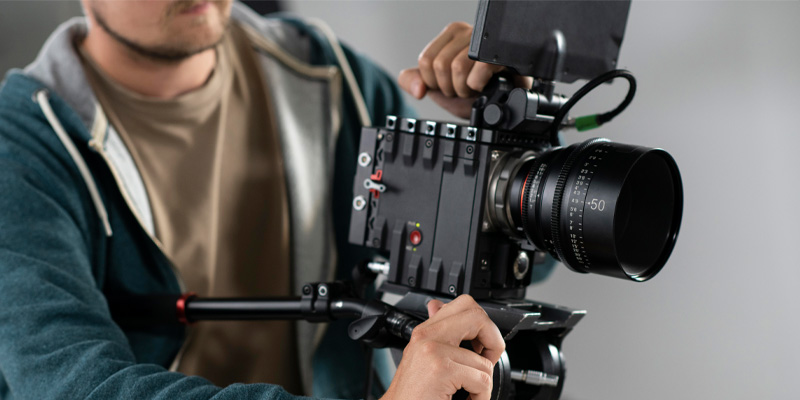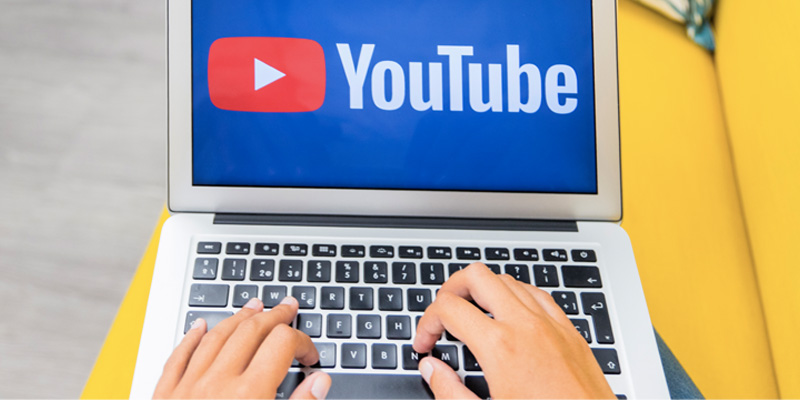Building Trust and Credibility Through Documentary Videos
In today’s digital age, where brand perception is paramount, the quest for authenticity has never been more critical. Businesses are increasingly turning to documentary video production as a means to forge genuine connections with their audience. Unlike traditional corporate videos, which may focus solely on promoting products or services, documentaries strive to tell real stories that resonate on a human level. This blog delves into the transformative power of documentaries in enhancing brand trust and credibility, offering insights into the strategic integration of documentary storytelling into corporate video initiatives.
Reading Time: 17 Minutes
- 1. The Power of Documentary Storytelling in Business
- 2. Case Studies
- 3. Crafting Authentic Documentary Content for Your Brand
- 4. Key Elements of Trust-Building Documentary Videos
- 5. The Production Process: From Concept to Screen
- 6. Leveraging Corporate Documentaries Across Platforms
- 7. Frequently Asked Questions
- Conclusion
1. The Power of Documentary Storytelling in Business

1.1. Defining Documentary Storytelling
At its core, documentary storytelling in the business context transcends mere promotion or advertising. It’s an art form dedicated to uncovering truths, sharing genuine narratives, and presenting the heartbeat of a brand. Unlike traditional corporate videos focused on selling, documentaries aim to tell stories that resonate deeply, offering insights into a company’s ethos, its people, and the passion that drives its mission. This approach turns the spotlight on real experiences, challenges, and achievements, crafting a narrative that viewers can connect with on a human level.
For instance, imagine a documentary showcasing the journey of a product from conception to market. Rather than highlighting the product’s features, the story delves into the inspiration behind its creation, the hurdles encountered by the design team, and the impact it aims to have on customers’ lives. This method of storytelling invites the audience behind the scenes, fostering a transparent and intimate connection with the brand.
1.2. Why Authenticity Matters
In today’s saturated market, authenticity isn’t just a buzzword—it’s the cornerstone of meaningful engagement. Authenticity in documentary storytelling for businesses means presenting a brand’s journey, values, and vision without artifice. It’s about creating narratives that viewers can see themselves in, relate to, and trust. This genuine connection is crucial, as modern consumers are more discerning and skeptical of traditional advertising. They seek brands with stories that align with their own values and experiences.
Authentic storytelling fosters deeper emotional connections, encouraging viewers to become not just customers, but loyal advocates and part of a brand’s community. For example, a documentary that shares a company’s efforts to overcome environmental challenges speaks volumes about its commitment to sustainability. This not only informs but also inspires viewers, potentially aligning the brand with the audience’s personal values and earning their trust.
2. Case Studies
2.1. Patagonia’s Environmental Advocacy
Patagonia’s commitment to environmental conservation has been effectively communicated through its documentaries. Films like “DamNation” and “Blue Heart” highlight the brand’s dedication to protecting natural habitats and ecosystems. Rather than directly promoting their products, these documentaries demonstrate Patagonia’s genuine commitment to environmental causes, resonating with like-minded consumers and reinforcing the brand’s credibility.
2.2. Dove’s Real Beauty Campaign
Dove’s “Real Beauty” campaign utilized documentary-style videos to challenge societal standards of beauty. By featuring real women sharing their personal stories and perceptions of beauty, Dove fostered an authentic connection with its audience. This approach not only sparked conversations around beauty standards but also reinforced Dove’s commitment to inclusivity and self-esteem, enhancing the brand’s trustworthiness.
2.3. Airbnb’s “We Accept”
Airbnb’s “We Accept” campaign is another powerful example of documentary storytelling. This initiative was born out of controversy but turned into a positive narrative that emphasized acceptance and inclusivity within the Airbnb community. Through real stories from hosts and guests, the campaign showcased the brand’s core values, building trust with its audience on a global scale.
3. Crafting Authentic Documentary Content for Your Brand

3.1. Identifying Your Story
- Discovering the Heartbeat of Your Brand: Begin by asking fundamental questions about your brand’s purpose, values, and mission. What inspired the founding of your company? How has it evolved over time? What challenges have you faced, and how did you overcome them? These questions can uncover the emotional core of your brand’s story.
- Highlighting Human Stories: Focus on the people behind your brand. This could be the passionate founder, the dedicated employees, or the satisfied customers whose lives have been touched by your product or service. Human stories create a relatable and emotional connection with your audience.
- Identifying Impactful Moments: Look for milestones or transformative events in your company’s history that could serve as a focal point for your documentary. This could include a pivotal decision, a significant product launch, or a community initiative.
3.2. The Role of Documentary in Corporate Strategy
- Complementing Your Marketing Mix: Consider how documentary content fits into your existing marketing strategy. It should complement, not replace, your current efforts, adding depth and dimension to your brand’s narrative.
- Building Campaigns Around Documentaries: Use your documentary as the cornerstone of a larger campaign. This could involve creating shorter clips for social media, hosting screenings for stakeholders, or incorporating themes from the documentary into other marketing materials.
- Long-Term Brand Building: View documentary content as a long-term investment in your brand. A well-crafted documentary can have a lasting impact, strengthening your brand identity and enhancing credibility over time.
3.3. Collaboration with Documentary Filmmakers
- Selecting the Right Partner: Look for filmmakers who have experience in your industry or with similar themes. Their portfolio should resonate with your brand’s values and aesthetic.
- The Collaborative Process: Engage in a collaborative process with your chosen filmmakers. While they bring storytelling and technical skills to the table, you provide the deep brand knowledge and access that will guide the documentary’s direction.
- Leveraging Expertise for Authenticity: Professional filmmakers know how to capture authenticity on screen. They can help navigate the balance between promotional content and genuine storytelling, ensuring that your documentary feels real, engaging, and truthful.
4. Key Elements of Trust-Building Documentary Videos

4.1. Authenticity and Vulnerability
In the realm of documentary filmmaking for businesses, authenticity is the cornerstone. Authenticity involves presenting your brand’s story truthfully, without embellishment or evasion. It’s about embracing your brand’s journey, including both triumphs and trials, to present a narrative that viewers can believe in and relate to.
- Showing the Human Side of Your Business: People connect with people, not faceless entities. By focusing on the individuals behind your brand—their passions, their challenges, and their stories—you create a documentary that feels personal and genuine. For instance, a documentary featuring the day-to-day life of your team, from the CEO to the frontline employees, can demystify your brand and foster a sense of familiarity and trust.
- Embracing Vulnerability: Vulnerability is a powerful tool in storytelling. It involves letting down guards and showing the struggles and failures that your business has encountered along the way. This doesn’t diminish your brand’s value; rather, it humanizes it, making it more accessible and relatable to your audience. A documentary that candidly discusses past mistakes, lessons learned, and how they shaped the company’s direction can significantly enhance viewers’ trust.
4.2. Quality and Professionalism
While authenticity connects your story to the audience, the quality of the documentary ensures that the message is delivered effectively and credibly. High production values signal to viewers that you are committed to excellence, not just in your documentary but in all aspects of your business.
- Importance of High Production Values: Investing in quality-through professional cinematography, sound design, and editing-ensures that your documentary conveys credibility. It demonstrates that you value your brand and are willing to invest in sharing its story properly. For example, well-composed visuals and clear, crisp audio can make even the simplest interview feel profound and engaging.
- Conveying Credibility through Professionalism: The professionalism displayed in your documentary extends to your brand’s image. It suggests meticulousness, attention to detail, and a dedication to quality that viewers can expect from your products or services. Ensuring your documentary reflects these traits can significantly boost your brand’s perceived trustworthiness and authority in your industry.
4.3. Engagement and Emotional Connection
The ultimate goal of a documentary video is to engage viewers emotionally, creating a connection that transcends mere commercial interest. Emotional storytelling involves crafting narratives that touch on universal themes—hope, perseverance, innovation, community-thereby eliciting a deep, emotional response from your audience.
- Leveraging Emotional Storytelling: Stories that evoke emotions tend to stick with us longer. By weaving emotional elements into your documentary-whether it’s joy, empathy, inspiration, or even outrage-you capture the audience’s attention and make your brand memorable. For instance, a documentary that showcases how your products or services have positively impacted real people’s lives can stir emotions and forge a stronger bond with your audience.
- Engaging Viewers Deeply: Emotional engagement is not just about feeling; it’s about action. A compelling documentary inspires viewers to think differently, discuss your brand, or take specific actions, such as supporting a cause your company is passionate about. This level of engagement transforms passive viewers into active brand advocates.
5. The Production Process: From Concept to Screen

5.1. Pre-production Planning
The foundation of any successful documentary lies in thorough pre-production planning. This phase sets the stage for the entire project, ensuring that the production process runs smoothly and the final product aligns with the brand’s goals.
- Developing the Concept: The first step involves brainstorming and refining the core idea or message of the documentary. What story do you want to tell? How does it reflect your brand’s values or mission? This stage may involve discussions with stakeholders, research, and exploring different angles to find the most compelling narrative.
- Scripting and Storyboarding: Once the concept is clear, the next step is to draft a script or outline. While documentary scripts may be less rigid than those for fictional films, having a clear outline helps guide interviews and scenes. Storyboarding, or creating visual panels to outline the documentary, helps visualize the flow and major segments, aiding in planning shots and sequences.
- Logistics and Scheduling: Pre-production also involves logistical planning, such as scheduling interviews, scouting and securing locations, and arranging any necessary travel. This is the time to ensure all permissions and legal requirements are addressed, including release forms for subjects appearing in the documentary.
5.2. Production Techniques
The production phase is where the planning comes to life, capturing the footage that will comprise the documentary.
- On-location Shooting: Authenticity in documentaries often comes from capturing subjects in their natural environments. On-location shooting requires adaptability and a keen eye for storytelling through visuals. Whether it’s the bustling environment of a manufacturing plant or the quiet intensity of a design studio, the setting adds depth to the narrative.
- Conducting Interviews: Interviews with key personnel, customers, or experts offer personal insights and testimonies that strengthen the documentary’s credibility. Effective interviews require preparation, with thoughtfully crafted questions that encourage genuine, revealing answers. The interviewer’s ability to establish rapport and create a comfortable environment is also crucial for eliciting authentic responses.
- Capturing the Essence of the Story: Beyond interviews and staged shots, capturing candid moments and behind-the-scenes footage can add richness and authenticity to the documentary. These spontaneous elements often convey the brand’s culture and values more powerfully than scripted content.
5.3. Post-production Magic
Post-production is where the raw materials are sculpted into the final documentary, with editing, sound design, and visual effects adding layers of meaning and emotion.
- Editing: The editing process involves selecting the best footage and arranging it to tell the story compellingly. It’s about pacing, narrative flow, and ensuring that the documentary communicates its message effectively. Editors work closely with directors to maintain the documentary’s vision while crafting a coherent and engaging piece.
- Sound Design and Music: Sound plays a pivotal role in setting the tone and enhancing the emotional impact of the documentary. Careful selection of music, sound effects, and the polishing of dialogue and ambient sounds can dramatically improve the viewing experience, making the story more immersive.
- Adding the Final Touches: Color grading, visual effects, and titles are finalized in this stage, enhancing the visual appeal and ensuring that the documentary meets professional standards. These finishing touches are crucial for creating a polished product that reflects the quality and professionalism of the brand.
6. Leveraging Corporate Documentaries Across Platforms

6.1. Distribution Strategies
Maximizing the visibility of your corporate documentary requires a strategic approach to distribution that encompasses various digital platforms, social media channels, and corporate communication avenues.
- Multi-Platform Distribution: To reach the widest possible audience, your documentary should be accessible across multiple platforms. This includes your company’s website, video hosting platforms like YouTube or Vimeo, and professional networks like LinkedIn. Tailoring the format and presentation for each platform can enhance viewer engagement.
- Social Media Amplification: Social media platforms offer a powerful tool for spreading your documentary. Short clips or highlights can be shared along with compelling captions to pique interest and drive traffic to the full video. Platforms like Instagram, Twitter, and Facebook each have unique audiences and features (e.g., Instagram Stories, Facebook Live) that can be leveraged to maximize exposure.
- Email and Newsletter Promotion: Incorporating your documentary into email marketing campaigns or newsletters can attract viewers from your existing customer base or subscriber list. A well-crafted email with a link to the documentary can be an effective way to re-engage individuals already familiar with your brand.
6.2. Engaging Your Audience
The goal of a corporate documentary is not just to be seen but to connect and engage with viewers on a meaningful level.
- Encouraging Interaction: Invite your audience to share their thoughts, stories, or reactions related to the documentary’s content. This can be facilitated through social media comments, dedicated discussion forums, or interactive Q&A sessions. Engagement can be further enhanced by responding to comments and fostering a dialogue around the documentary’s themes.
- Utilizing Calls to Action: Strategic calls to action (CTAs) can guide viewers toward deeper engagement with your brand. Whether it’s inviting viewers to learn more about a topic on your website, encouraging them to sign up for a newsletter, or prompting them to join a community initiative, CTAs should be relevant and seamlessly integrated into the viewing experience.
- Leveraging Influencers and Partners: Collaborating with influencers or industry partners to share and promote your documentary can extend its reach to new audiences. Choose partners whose values align with your brand and who can authentically advocate for the documentary’s message.
6.3. Measuring Impact
Understanding the effectiveness of your documentary in building trust and credibility requires a comprehensive approach to measurement.
- Analytics and Viewer Feedback: Digital platforms offer a wealth of analytics, from view counts and watch time to engagement metrics like likes, shares, and comments. These quantitative measures can provide insights into the documentary’s reach and viewer interest. Qualitative feedback, gathered through surveys or direct comments, can offer deeper insights into how the documentary influenced viewers’ perceptions of your brand.
- Tracking Brand Metrics: Beyond immediate engagement, assess the documentary’s impact on broader brand metrics such as brand awareness, trust, and loyalty. This may involve pre- and post-campaign surveys, monitoring brand sentiment on social media, or analyzing trends in website traffic and inquiries related to the documentary’s content.
- ROI Analysis: While harder to quantify, evaluating the return on investment (ROI) for a documentary campaign can involve comparing the costs of production and distribution against the value of the generated brand equity, customer engagement, and, where applicable, direct leads or sales.
7. Frequently Asked Questions

7.1. How do I choose a compelling story for my corporate documentary?
Choosing a compelling story for your corporate documentary starts with introspection and research. Look for narratives within your company that embody your core values, highlight your unique selling propositions, or showcase your impact on customers and the community. A compelling story often involves overcoming obstacles, innovations, or personal journeys that reflect the human aspect of your brand. Engage with employees at all levels, listen to customer feedback, and consider the broader impact of your work to unearth stories that resonate.
7.2. What budget should I anticipate for documentary video production?
The budget for documentary video production can vary widely based on several factors, including the length of the documentary, the complexity of the story, travel requirements, and the level of production quality desired. Generally, budgets can range from a few thousand dollars for a short, simple piece produced locally, to tens or even hundreds of thousands for high-end productions involving extensive travel or special equipment. Early consultation with production companies can help you gauge a realistic budget for your project’s scope and ambitions.
7.3. How can small businesses leverage documentaries without a large budget?
Small businesses can still leverage the power of documentaries by focusing on simple, authentic stories that can be captured with minimal resources. Consider using in-house talent for interviews and capturing behind-the-scenes footage of your operations. Modern smartphones can produce high-quality video suitable for online platforms. Additionally, local film schools or emerging filmmakers may be willing to collaborate at reduced rates for the opportunity to build their portfolios. The key is to prioritize authentic storytelling over high production values.
7.4. Can documentary videos replace traditional marketing content?
While documentary videos offer a unique and powerful way to engage audiences, they should complement rather than replace traditional marketing content. Documentaries are best used as part of a broader content strategy that includes various formats and channels. They excel at building brand awareness, trust, and emotional connection, while other types of content may be more effective for direct sales or specific product promotions.
7.5. How long should a corporate documentary be to maintain engagement?
The ideal length for a corporate documentary varies depending on the story you’re telling and the platform you’re using to share it. For online platforms, shorter documentaries (between 5 to 15 minutes) tend to retain viewer engagement better, given the typical online attention spans. However, if your story is particularly compelling or if you’re presenting the documentary in a controlled environment (like a corporate event or a dedicated screening), longer formats (up to 30 minutes or more) can be effective. The key is to ensure that every moment adds value and keeps the audience engaged.
Conclusion
The journey through the realm of documentary video production reveals its profound capacity to transform how businesses connect with their audiences. Unlike traditional marketing materials, documentaries offer a window into the soul of a company, presenting stories of triumph, perseverance, innovation, and human connection that resonate deeply with viewers. These narratives, rooted in authenticity, have the power to foster a level of trust and credibility that conventional advertising methods seldom achieve.
As we’ve explored, the key to unlocking this potential lies not just in telling any story, but in uncovering the unique, genuine stories that exist within every organization. These are the stories that humanize brands, making them relatable and trustworthy in the eyes of their audience. The process, from identifying these narratives to bringing them to life on screen, demands a thoughtful approach, blending creativity with strategic intent. It’s about more than just capturing footage; it’s about crafting a message that speaks to the core of who you are as a brand.
For businesses considering documentary video production, the message is clear: there exists an unparalleled opportunity to strengthen your brand’s connection with its audience. By investing in documentaries, you’re not just producing content; you’re engaging in an act of authentic storytelling that can elevate your brand in the crowded marketplace. This approach not only sets you apart from competitors but also builds a foundation of trust and credibility that can support your business objectives for years to come.
We encourage businesses of all sizes and industries to explore the possibilities that documentary video production offers. Whether it’s highlighting your company’s impact on the community, showcasing the passion that drives your team, or sharing the challenges and successes that have shaped your journey, there’s a story within your brand that’s waiting to be told. Embrace the power of documentary storytelling, and let it transform the way the world sees your brand.
Stay Updated with Video Production Trends!
Don’t miss the latest in video production. Subscribe now!